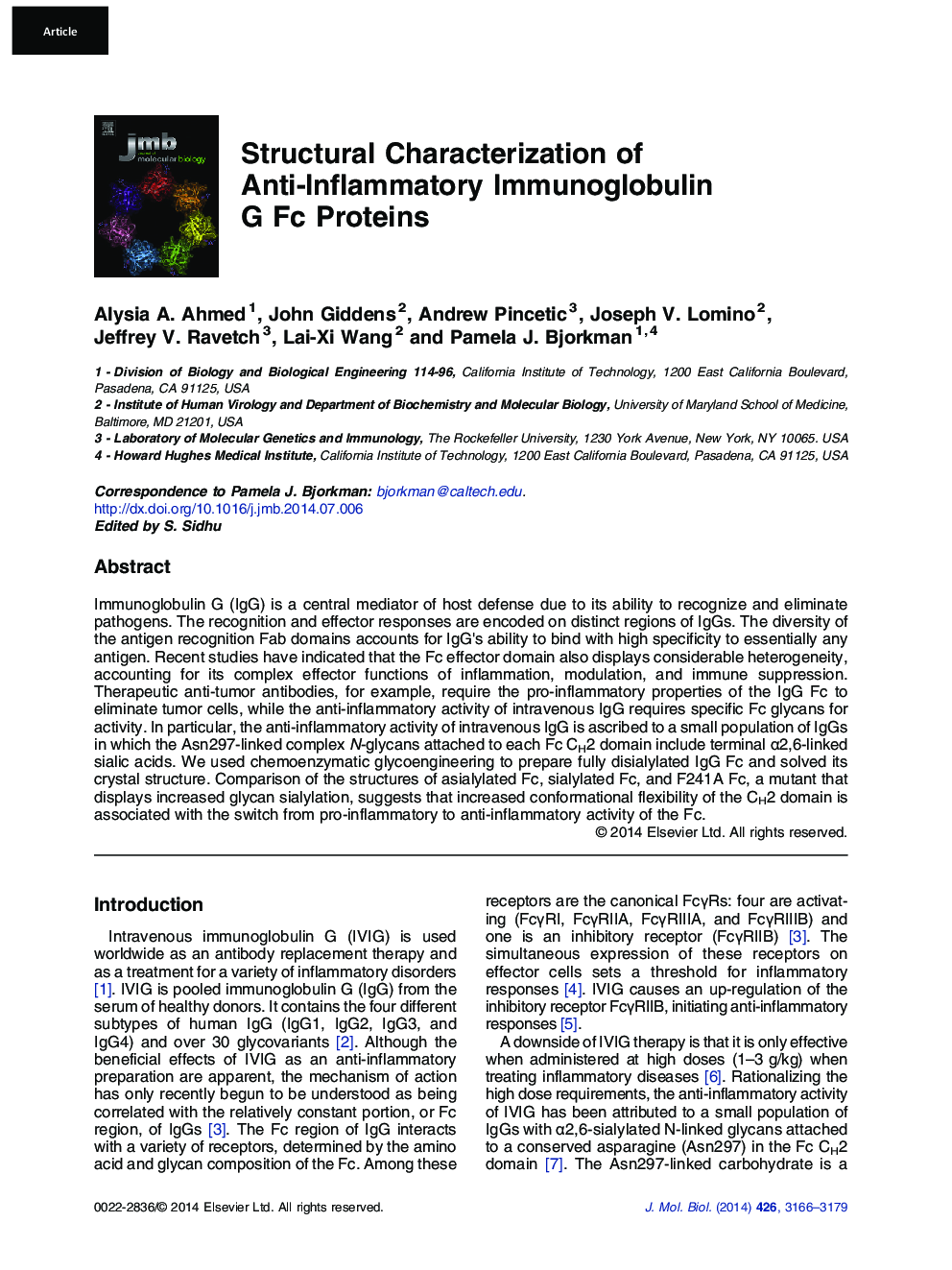| کد مقاله | کد نشریه | سال انتشار | مقاله انگلیسی | نسخه تمام متن |
|---|---|---|---|---|
| 2184369 | 1095832 | 2014 | 14 صفحه PDF | دانلود رایگان |

• What structural changes occur with sialylation cause IgG anti-inflammatory state?
• Sialylated Fc structures exist in open and closed conformations.
• The side chain of Phe241 can adopt an altered conformation in sialylated Fc.
• F241A mutation causes increased inter-domain flexibility in Fc crystal structures.
Immunoglobulin G (IgG) is a central mediator of host defense due to its ability to recognize and eliminate pathogens. The recognition and effector responses are encoded on distinct regions of IgGs. The diversity of the antigen recognition Fab domains accounts for IgG's ability to bind with high specificity to essentially any antigen. Recent studies have indicated that the Fc effector domain also displays considerable heterogeneity, accounting for its complex effector functions of inflammation, modulation, and immune suppression. Therapeutic anti-tumor antibodies, for example, require the pro-inflammatory properties of the IgG Fc to eliminate tumor cells, while the anti-inflammatory activity of intravenous IgG requires specific Fc glycans for activity. In particular, the anti-inflammatory activity of intravenous IgG is ascribed to a small population of IgGs in which the Asn297-linked complex N-glycans attached to each Fc CH2 domain include terminal α2,6-linked sialic acids. We used chemoenzymatic glycoengineering to prepare fully disialylated IgG Fc and solved its crystal structure. Comparison of the structures of asialylated Fc, sialylated Fc, and F241A Fc, a mutant that displays increased glycan sialylation, suggests that increased conformational flexibility of the CH2 domain is associated with the switch from pro-inflammatory to anti-inflammatory activity of the Fc.
Graphical AbstractIncreased conformational flexibility of IgG Fc associated with switch from pro-inflammatory to anti-inflammatory activity.Figure optionsDownload high-quality image (274 K)Download as PowerPoint slide
Journal: Journal of Molecular Biology - Volume 426, Issue 18, 9 September 2014, Pages 3166–3179